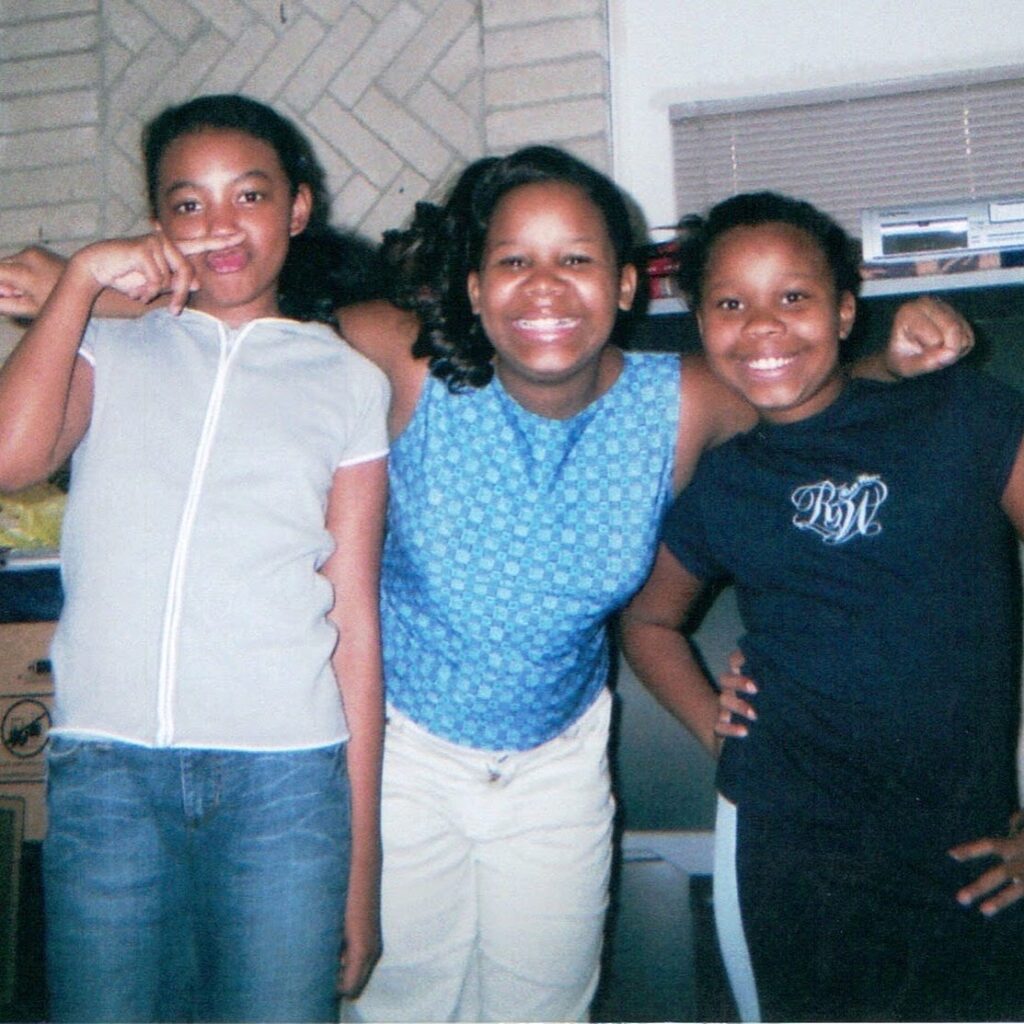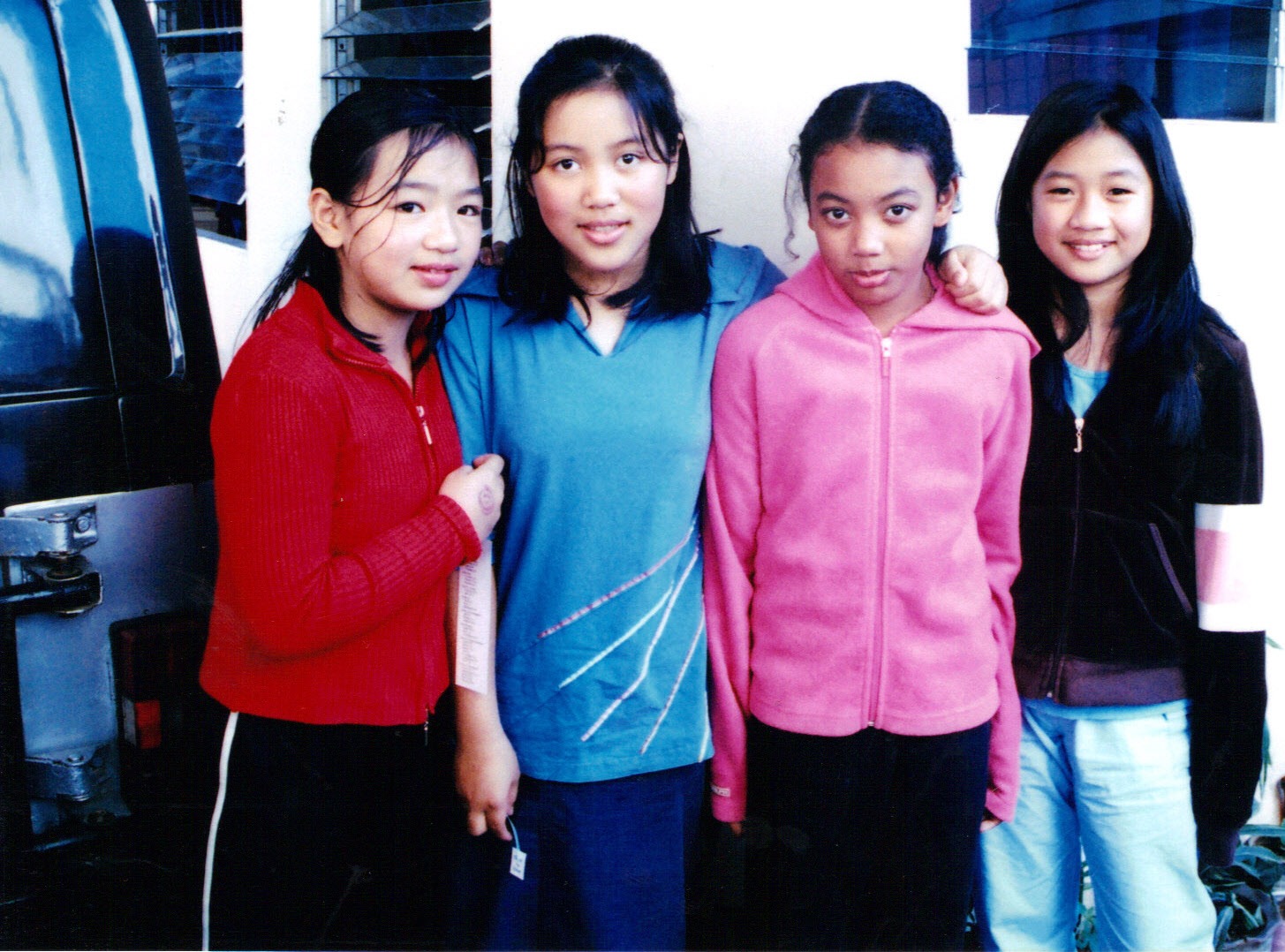My first distinct memory of being ridiculed for my hair dates back to when I was a 10-year-old girl in the Philippines. Unexpectedly, it was an adult who cast the first stone, not a child my age. “Don’t you brush your hair?” my Tagalog teacher uttered derisively, visually disapproving of the natural state of my locks. I can’t exactly pinpoint the emotion I detected on her face that day, but it certainly wasn’t anything positive. This incident marked one among many where I encountered colorism and anti-black biases during my years in the Philippines. Such remarks were not isolated incidents but rather defining aspects of my childhood there, underpinning my decision to have my hair chemically straightened.
A year later, in 2005, I found myself in Channelview, Texas, a small city just on the edge of Houston. My new school was mainly populated by Black and Latino students, and I had hoped that being in a more racially diverse area (more diverse than the Philippines, anyway) would mean I wouldn’t face mockery for my hair. Unfortunately, that was wishful thinking. Being of mixed heritage, with an Asian mother and a dad who was, well, a dad—I was left to navigate my hair care alone. My mom did what she could with the limited resources she had in an era before YouTube tutorials, but my hair still didn’t conform to the standards of neatness as defined by both the Filipino and Black communities. As a result, I endured bullying from Black peers who felt my hair wasn’t styled correctly.

In the 7th grade, still in Texas, there came a day when I opted to go to school without straightening my hair. Perhaps I woke up too late to straighten my hair—I don’t remember the exact reason. Walking down the school hallway, I actually felt a surge of confidence. In my eyes, my hair was just fine. That self-assuredness was short-lived, however, as a white teacher poked his head out of his classroom, noticed me, and remarked, “Having a bad hair day?” followed by his laughter.
Just before starting 8th grade, my family and I relocated to Long Beach, California. Still carrying the mental scars related to my hair, I continued the straightening routine in this new environment. Long Beach was the most diverse place I had lived in up to that point, representing a melting pot of contrasting cultures including Latinos, Black people, Asians, White people, and Polynesians among many others. Then, one day calamity struck—my flat iron broke, compelling me to attend school with my naturally curly hair. I had hoped that the wide variety of cultures in this new city would lessen the chance of being mocked. Yet predictably, I still fell victim to ridicule. Overwhelmed with shame and embarrassment, I contrived an illness to avoid school the next day. However, my mother saw through my ruse, quite literally pushing me out the door and back to school, curly hair and all, due to my still-broken flat iron.
By high school, I was, without exception, straightening my hair every day. The unrelenting heat exposure left my hair severely damaged to the point where it would not grow beyond a certain length as the individual strands kept breaking off. Yet in my eyes, this damage seemed a small price to pay for social acceptance.
My senior year of high school, around 2012, marked another turning point. I began to experiment with adopting a curly hairstyle albeit artificially created through crimping tools and curling irons. I still lacked the knowledge to maintain and enhance natural curls properly. Coincidentally, this was about the same time that the natural hair movement started gaining momentum and the ‘curly girl routines’ became a trending topic within numerous online platforms.
Beauty standards began to shift, seeing the sleek, pin-straight hair ideals of the early 2000s gradually replaced with a burgeoning appreciation for a range of hair textures. People of color began showing up more frequently in the media and accounts celebrating different hair textures began to pop up across websites like Tumblr. This represented a unique beauty renaissance, and I was ideally positioned to benefit from it.
Despite this positive shift, the residual effects of earlier beauty standards held steady. A reminder of this came when a boy I had a crush on told me that he thought I was prettier with straight hair. Such comments, unfortunately reflective of long-established attitudes, were hard to ignore and even harder not to internalize.
After receiving my high school diploma, I allowed myself one final indulgence in the world of straight hair – I opted to bleach it, choosing to get the very popular-at-the-time ombre look. Predictably, this process wreaked havoc on my natural curls, but after enduring six months of damaged hair, I returned my hair to its natural black color and began the transition to embrace my natural texture, drawing inspiration from the flourishing natural hair community and the burgeoning curly girl discussions online.
The relationship to hair for Black women, and women of mixed Black heritage like myself, is undeniably complex. It is as though our hair becomes a figurative jail, confined not by its strands but by the weight of societal expectations shackling it. While I was straightening my hair daily, I lived in constant fear of rain ruining the fruits of my labor. Pool parties were no-go zones, and I didn’t like working out due to anxiety over messing up my hair. My hair was dictating the terms of my life’s experiences, turning each day into a tiresome battle to maintain its unyielding demands. Eventually, I reached my limit with that way of living.
A big change began around my second and third semesters at college, where I began to embrace my natural hair. I was fervently trying out various products, finding out which ones suited me, and learning to appreciate my appearance with my curls untouched. My heartfelt gratitude goes to the pioneering Black women at the forefront of the natural hair movement. Their fearless celebration of their innate hair textures, despite societal pressures, profoundly moved me. While my own loose curls weren’t exactly what the movement’s imagery often reflected, these women’s display of self-love and acceptance resonated deeply with me, stirring a desire within to also proudly wear my hair as it naturally flows from my scalp. This inspiration transcended hair types and became a personal call to action — to appreciate the natural beauty of my curls, to learn from their courage, and to embrace my own unique identity with the same fervor.
It was also during this time that I ventured into modeling and acting, leading to my departure from college. My hair, which had once been a source of considerable distress, now became my unique selling point. Agencies and fashion and beauty clients were enamored with my natural curls, and as a result, opportunities started to knock on my door. The very attribute I had been made to feel ashamed of was now opening new paths for me. And so, I bid farewell to straight hair.
From 2013 to 2023, my hair journey has been predominantly natural. I would occasionally straighten my hair perhaps twice a year, just for a change of pace. Embracing my curls, I sought the expertise of curl specialists for haircuts, where each curl would be considered individually and snipped with precision. I indulged in the fun of experimenting with my hair, testing out styles like curly layers, curly bangs, letting it cascade down my back, and even daring to chop it to a curly bob. Yet, upon reaching the cusp of my 30s, I found myself grappling with a sense of boredom regarding my hair.
In October, I ventured into what felt like forbidden territory: after ten whole years, I sat in the salon chair for a straight haircut. GASP. As I reintroduced the straightening routine into my life after a decade’s dedication to natural hair, pangs of guilt began to surface. It felt as though I was somehow betraying my defiance against conventional beauty standards that I had carried as a badge of honor. But upon reflection, I realized that the grounds for my return to straightened hair were entirely different from those of my childhood. Back then, at 11, I yielded to the flat iron out of a deep-seated sense of shame. Now, I make the choice out of boredom and a desire for diversity in my appearance.
The ten-year odyssey with natural hair proved liberating—it was more than a style; it was a radical declaration of self-acceptance and a severing of the chains of internalized racism. Previously, straightened hair equated to a boost in self-esteem. Now, it’s simply another option in my styling toolkit, devoid of the emotional weight it once had.
Dealing with these conflicting emotions of guilt and perceived self-betrayal since I started straightening my hair again was tough. Nevertheless, I came to a powerful realization: I am not the same person I was as a child. I have evolved, matured and most importantly, grown. The ability to acknowledge this personal growth is, indeed, a priceless gift.
